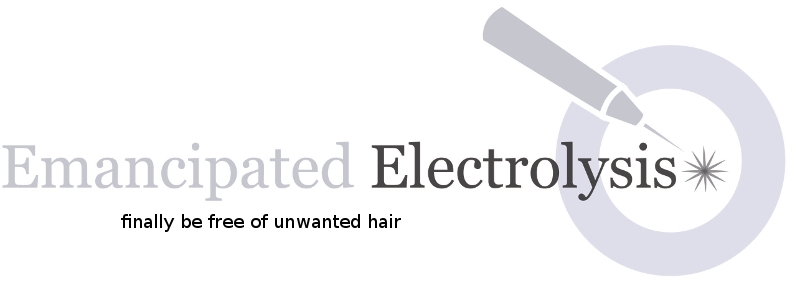Pain sensitivity varies greatly between people, with the pain experienced during electrolysis generally diminishing with age, as the amount of moisture in the skin declines. Pain tolerance also varies on a number of other factors, including hormonal fluctuations, changes in the weather, how much sleep the client had the night before, stress, medication, etc. Some people barely even notice any pain during the procedure.
Before we get into ways to help with pain management, first, we’ll examine what causes the pain.
During galvanic electrolysis, the application of direct current to the follicle, mixed with the salt and water already present in the follicle, causes a chemical reaction that creates sodium hydroxide, better known as lye, which is a base, that chemically eats away the cells inside the follicle, much like how acid can eat away metal. Typically, this process lasts for anywhere from 30 seconds to several minutes depending on how it is performed.
During thermolysis, the application of radio waves excites the water molecules inside the follicle generating heat, much like what happens in a microwave, which damages the cells inside the follicle. The heat creating during thermolysis dissipates quickly, usually within a fraction of a second for a single hair, but when working in a dense area, the tissue around the follicle continually warms, making a residual amount of heat for up to an hour or two after completion.
Blend is a combination of both at the same time.
Again, most people find that they can go through up to an hour of electrolysis with no need to manage the pain. However, for the people that do need some help, here in the office, we offer a fast acting topical anesthetic (20% benzocaine), as well as a longer acting topical anesthetic (4% lidocaine), another type of topical anesthetic for mucous membrane areas (20% benzocaine gel in mint or cherry for the upper lip), ice packs, as well as a selection of insulated probes (used during thermolysis to reduce the amount of heat radiated into the skin) from Ballet and Laurier. These methods can be combined together to create an amplified effect (such as using lidocaine with insulated probes). We then follow up the treatment with an application of chilled pure aloe or witch hazel gel.
Those are not the only tools available, however. Some people take oral over the counter medicines, such as acetaminophen or ibuprofen an hour or so before coming in (just be sure to let us know, as some of these can cause the blood to thin, resulting in minor bleeding during treatment). Another option is prescription EMLA cream (2.5% lidocaine, 2.5% prilocaine), acquired from their doctor prior to treatment, which is then applied about an hour before your session and covered in plastic wrap to keep it fresh (the wrap is peeled back and removed as we work through an area). For people getting work done around the mouth, your dentist can give an injection to numb the area prior to coming in (we also have a dentist we can recommend if your own dentist isn’t comfortable doing this), and for areas not around the mouth, you can get another doctor to give you lidocaine injections prior to coming in.
Along with these ideas, one other tip to note, is that many people experience a histamine response when working on the upper lip near the nose. This area will frequently cause watering eyes, runny nose, itching and/or sneezing. Some people prefer to take an antihistamine before their treatment to reduce the effect, although most people manage fine without it.
To sum up, there are options available for people that need help managing the pain of having their hair removed, however, most people don’t need to take any of these steps to receive an effective experience. For more information about pain management during electrolysis, permanent hair removal or electrolysis in general or to book an appointment, contact us at hairinfo@EmancipatedElectrolysis.com or call us at 585-270-5230 and finally be free of unwanted hair.
